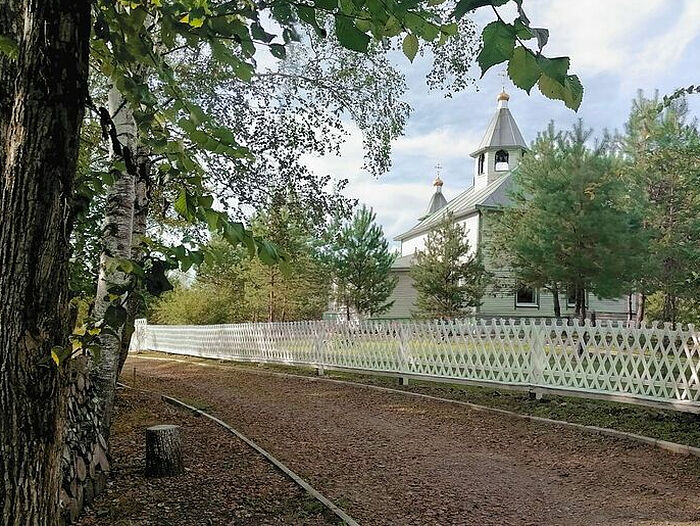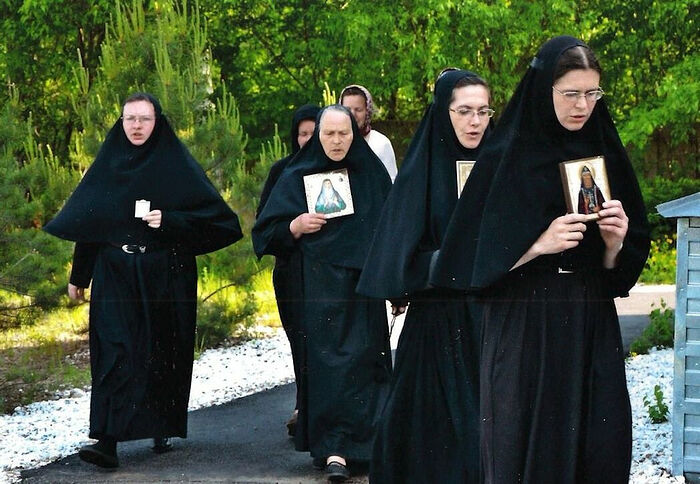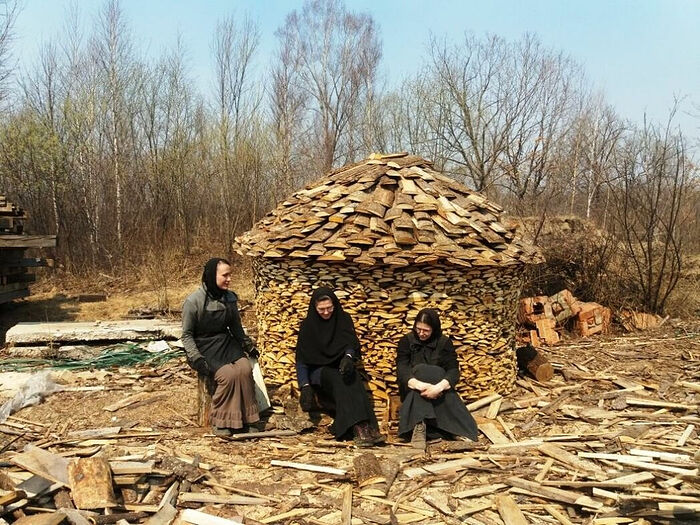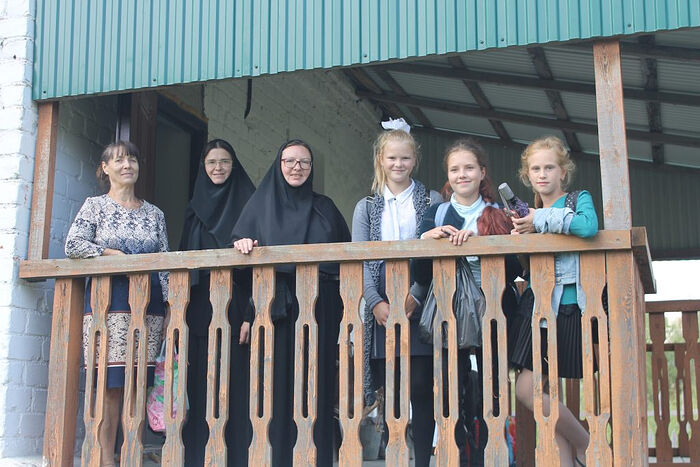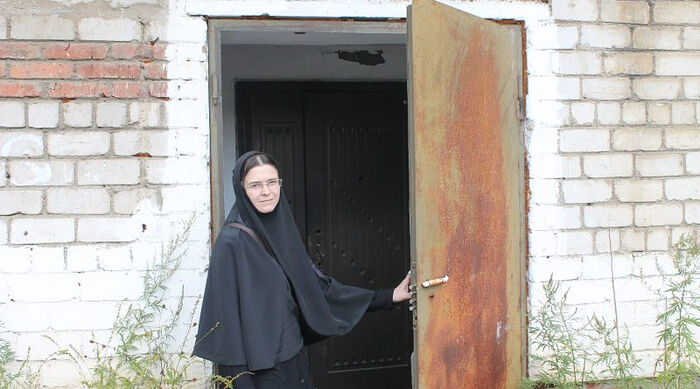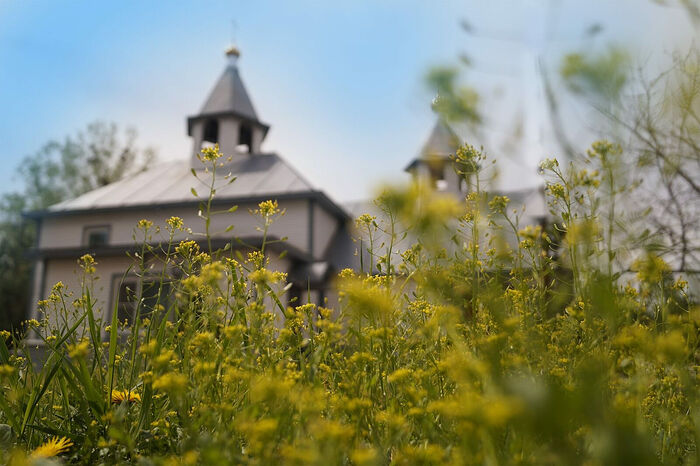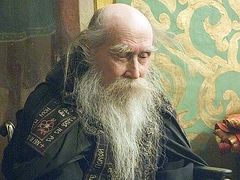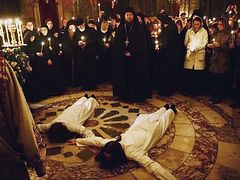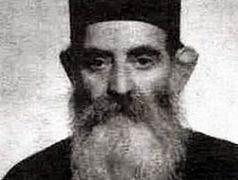“This is a place where the soul meets God. Here the Lord speaks in a still, small voice.” This is how pilgrims poetically describe their impressions after visiting St. Innocent’s Convent in the village of Razdolnoe. The convent was founded in 2007 and is located in a region with harsh climatic conditions and a sparse population. Everyday hardships, geographical remoteness and the “hard labor” history of this region form special impressions from visiting the convent, filled with a deep spiritual feeling.
We talked with the abbess of the convent, Mother Anastasia (Ivanchenko), on how the convent lives in such difficult conditions, its significance for this part of the world, and how St. Innocent of Moscow, its heavenly patron, helps it.
“Locals are just beginning to discover the Church”
—Today, Russia’s Far East is, according to statistics, the least religious region in the country. However, this territory is strategically significant not only geographically, but also spiritually—these lands were a place of exile for tens of thousands of people and a place of a terrible experiment on human souls. And spiritual life was destroyed here for many years, right until the late 1990s. Tell us how its revival began.
—With a total area of around 13,000 square miles, the Jewish Autonomous Region is quite large. In the early 1990s, our convent’s father confessor, Hieromonk John (Kaplun), was the only priest in the whole of the region. There was not a single church—only a handful of small parishes that gathered for prayer in adapted premises. The lands here are wild and sparsely populated, so at the first stage much had to be done—the first services, the first Baptisms, the first Liturgies. And if St. Innocent of Moscow and his companions preached along the middle and lower Amur, then we have to be the first to preach to and serve the needs of our contemporaries living to the north—along the Trans-Siberian Railway and especially the Baikal-Amur Mainline.
Locals are just beginning to discover the Church. Their introduction to it is rather cautious. This requires a lot of time and effort. In our convent, for example, those wishing to get baptized undergo a rather long period of preparation. In the conditions of our region, this is necessary, since many do not see any difference between the Orthodox Church and various sects.
Once, while taking a bus to the city, we heard the following conversation. One village woman was explaining to another that in our convent in order to get baptized you need to attend classes and read the Gospel. “Read the Gospel?!” the other woman asked in surprise. “Are they not Orthodox?” For them the very word “Gospel” is often associated with sects, which are numerous in our region. As for monastic life and monasteries, people who visit our convent for the first time have a very vague idea about our way of life and are often very surprised that nuns do not marry or have children.
—What are the distinctive features of the Orthodox mission in the Far East region?
—What really distinguishes our lands from central Russia is the climate and the landscape. Undoubtedly, they affect a person’s psychological and spiritual development. Everyone knows the harsh climate of Siberia, and the Far East is no exception in this sense. But at the same time, it has the largest number of sunny days per year compared to the rest of Russia. Visually It is a very high blue sky, a bright sun, dry frosty winters and very hot summer days. All this is surrounded by a stunningly beautiful changing landscape of volcanoes, rivers, lakes, fields, taiga and swamps. There are few developed places here, and everything around calls us to labor, courage, and struggle.
Russians are widely reputed to be rather austere and wild, and in the Far East these features are all the keener. You can seldom see coddled stylish hipsters or vapers here, and preaching addressed to local inhabitants should be simple, serious, sincere and completely alien to any hypocrisy and loftiness.
“The main helper from among the saints”
 St. Innocent, Metropolitan of Moscow —Do you feel the protection of St. Innocent of Moscow at your convent, and if so, how does it manifest itself?
St. Innocent, Metropolitan of Moscow —Do you feel the protection of St. Innocent of Moscow at your convent, and if so, how does it manifest itself?
—For the sisters of the convent St. Innocent is their main helper in their needs from among the saints. When someone gets sick, we read the canon to our saint; when there is an accident in the boiler room (the nuns heat the convent themselves), we cry out: “Fr. Innocent, help!”; when There are not enough funds for the construction or for the necessary household needs, here we can’t do without his help.
I remember a story when we needed a certain amount to pay for lumber, and the supplier could not wait. During the service the priest and the nuns prayed to God about this need at the Church of St. Innocent, remembering the words of our Savior Jesus Christ: Ask, and it shall be given you; seek, and ye shall find; knock, and it shall be opened unto you. For every one that asketh receiveth; and he that seeketh findeth; and to him that knocketh it shall be opened (Lk. 11:9-10). And by the end of the service we received a postal order with the required amount. There are many such cases; our convent is young, and we have to build constantly, improve and develop the property, and set the day-to-day life of the sisters tough.
“This place is holy. It must not be abandoned.”
—Mother Anastasia, how does the convent live today? What are the plans for its development?
—There are only eight of us at the convent: six nuns, a ryassophore nun and a novice. On the convent’s territory we have a wooden Church of St. Innocent of Moscow, a stone cell block with a house Church of the Icon of the Mother of God, “The Provider of Bread”, a holy spring dedicated to St. Innocent to which many people come for water, and a small farm where we keep a horse and chickens. The sisters themselves make wax candles, bake prosphora and bread, do needlework for sale (weave prayer ropes, knit bags), publish printed materials, and work in the garden.
Now the construction of the second cell building is underway in the convent, where we are going to accommodate our sisters, since in the former one we no longer have enough space and have to live in a trailer. Construction is slow, and funds are often lacking. In a neighboring village not far from the convent we have a dependency with a stone church and a bell tower, where some sisters labor. There is also our skete in the village of Dvurechye. One of our nuns is the head of the skete and lives in it periodically (due to the construction work that is in progress there it is still impossible to live there permanently). Village girls spend a lot of time with her, helping her in the work, learning prayers, and doing needlework under her guidance.
Of course, believers who are not indifferent to the convent help us in all these labors. They help as much as possible with food, building materials and simply with their own work. But despite our many needs and chores, we try not to forget that the goal of monastic life is not the erection of beautiful buildings and cell blocks, but, above all, the fulfillment of the Gospel commandments and the preservation of peace and love between the sisters.
—You mentioned the skete in the village of Dvurechye. What is remarkable about this place?
—In 2020, with the blessing of our ruling hierarch, Vladyka Ephraim,[1] the parish of the Holy Apostles Peter and Paul in the village of Dvurechye was transformed into our convent’s skete. In this village was located the central labor camp hospital of Bamlag, the Bureinsky railway camp at Izvestkovoe station. A memorial cross was set up on the site of the camp hospital, to which pilgrimages are organized on the feast of the holy New Martyrs of the Birobidzhan Diocese (July 13). There is a small building nearby—a former bathhouse built by prisoners. In this building we are now setting up a small house church and several cells for the sisters. There is a dilapidated two-storied building opposite the memorial cross, which Vladyka Ephraim bought for the skete from the village administration. In it we are planning to create cells for the sisters who will live, work and pray there, along with a place for pilgrims and a small museum dedicated to our new martyrs.
In the yard of this building and a little further on in a lower area was the labor camp cemetery, where the relics of our new martyrs lie in unknown graves—those of Martyr John of Kuldur; Martyr Paraskeva Kochneva; the Hieromartyrs Archpriest Nil Smirnov, Priest Dimitry Rozanov, Deacon Gregory Samarin and others. This place is holy and it must not be abandoned. On the site of the cemetery we want to set up a memorial so people will know where the burial place of these saints is and honor it, because at the moment villagers and even cattle walk over it and vehicles drive over it.
All of this naturally requires a lot of money. The two-storied building was abandoned; there are no windows, the roof is dilapidated, and there is no floor, which the locals ripped off to use for kindling. We will again need to install sewers and electricity. Now we are collecting donations for this good cause and praying for all those who have helped us.
—Today St. Innocent’s Convent is known far beyond the Jewish Autonomous Region, with pilgrims traveling here from all over Russia and other countries. What can they see here? What shrines are there in the convent?
—In our convent we have an icon of St. Innocent of Moscow with a particle of his holy relics; a reliquary with particles of the relics of St. Nicholas the Wonderworker and Great-Martyr Anastasia the Deliverer from Bonds; a reliquary with particles of the relics of the early martyrs Victoria, Concordia and Vincentia; reliquaries with the relics of the New Venerable Confessor Paraskeva (Matieshina) and Blessed Ekaterina of Pukhtitsa Convent; and a reliquary with portions of the relics of the holy Right-Believing Princes Vasily and Konstantin of Yaroslavl. In the Church of Martyr John the Soldier of our dependency there is an old icon of the Mother of God, “It Is Truly Meet”, painted on Mt. Athos 120 years ago, as well as an icon of the Holy Fathers of the 1917–1918 Russian Local Council with particles of the relics of Hieromartyr Vladimir, Metropolitan of Kiev, and Hieroconfessor Agafangel, Metropolitan of Yaroslavl and Rostov.
The iconostasis in the Church of Martyr John the Soldier in our dependency is very unusual for this region—it is made of “wild” stone and decorated with frescoes in the Old Russian style. A family from the city of Khabarovsk comes to this church annually on their wedding anniversary and reads the akathist to the holy martyr, asking for his help. Very often pilgrims who once visited our convent come to us again and again, staying for some days to work and pray together with the sisters.
—Tell us about the needs of your convent. How can one help you?
—During our talk I have already spoken about the needs of our community. Merciful Christians who wish to help us can do it by transferring funds to the Sberbank card number 4276700013141217 (the recipient: Abbess Anastasia (Anna Yuryevna I. / «Анна Юрьевна И.»)); the note: “For the skete” («на скит») or “For the cell building” («на корпус»), or through the form on our website: https://sestra.site/ pozhertvovanija/[2]
And, of course, we will be glad to have everyone who wants to work a little for the good of our convent and for the salvation of their souls.

